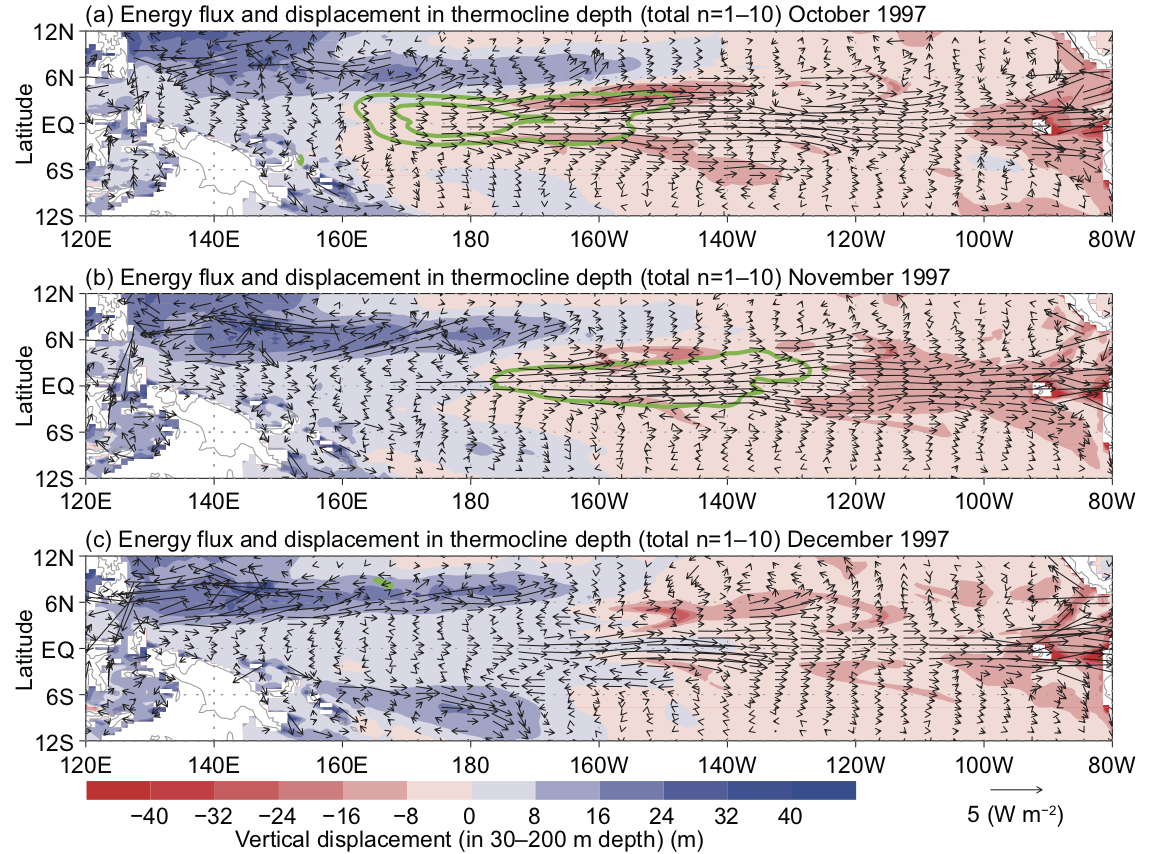Tropical climate variation monitoring based on the tracing analysis of wave energy in the atmosphere and ocean
[2021-05-17]
A recent formulation of wave energy flux that is diagnosable at all latitudes (Aiki et al., 2017 PEPS) is used in this research project to explore a new research field.This wave energy analysis has been applied in Toyoda et al. (2021, J. Clim.) to the ocean reanalysis product of the Meteorological Research Institute with intent to evaluate the effect of data assimilation in term of the energy budget. ENSO (El Niño-Southern Oscillation) is a prominent climatic phenomenon in the tropical Pacific Ocean with a global impact. Accurate representation of ENSO is important for understanding and predicting interannual variability of global climate, and hence many observational and theoretical studies have been conducted, making it an important target for seasonal forecasting of operations. It has been thought that the 1997-1998 El Niño has been triggered by a March westerly wind event in the western tropical Pacific. In late 1997, westerly wind anomalies in response to positive sea surface temperature anomalies provide an energy input to oceanic surface flows. In the present results, strong wind inputs due to surface wind anomalies in the central basin occur intermittently from September to early December to yield oceanic Kelvin waves which propagate eastward with thermocline deepening (Fig. 1a-c). In October, strong westerly wind anomalies in the central basin caused deepening in equatorial regions and shallowing in off-equatorial regions, which propagated westward, followed by reflection at the western boundary to yield thermocline shallowing that propagate eastward. This expansion of Kelvin waves relaxes the wind input of oceanic wave energy so that, in the December mean (Fig. 1c), the deepening of thermocline in the central basin has disappeared to terminate El Niño. The energy balance in off-equatorial regions shows that energy input owing to data assimilation is comparable to that of wind stress. This kind of detailed quantitative analysis based on the energy budget will lead to a better prediction of El Niño's demise.
Toyoda, T., and Coauthors, 2021: Energy flow diagnosis of ENSO from an ocean reanalysis. J. Climate, 34 (10), 4023–4042, doi:10.1175/JCLI-D-20-0704.1.
JSPS KAKENHI (A): Clarifying the mechanism of tropical climate variability based on the life-cycle analysis of wave energy in the atmosphere and ocean, H. Aiki, Y. Fukutomi (Nagoya Univ.), T. Ogata, M. Nagura (JAMSTEC), Y. Kanno (CRIEPI), T. Toyoda, H. Nakano (MRI), 2018-2021.

Figure 1. Energy fluxes (arrows) and vertical displacements (positive upward) of the thermocline depth (30-200 m; shading) for the sum of modes 1-10. (a) October, (b) November, and (c) December in 1997. Green contours indicate energy input by surface wind stress.
